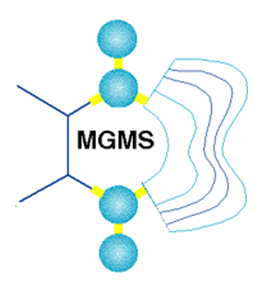 |
Molecular Graphics and Modelling Society |
Come and join the MGMS, a community of scientists with an interest in molecular graphics and simulation. The application form for membership can be downloaded or printed. Our community has a diverse range of experience, from students at the start of their careers, to scientists who are known around the world for their research work. Our honorary members are not just world-renowned scientists, but also people who have dedicated a lot of their time to building and promoting the MGMS throughout its history.
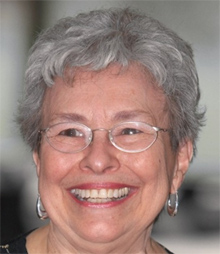 |
Yvonne Martin received a BA in Chemistry (1958) from Carleton College and a Ph.D. in Chemistry (1964) from Northwestern University. Except for a short period between 1967 and 1968 when she spent a sabbatical year at Pomona College with Professor Corwin Hansch her entire career was based at Abbott Laboratories where she first started in 1958 and retired in 2006 as the Senior Volwiler Research Fellow. Her stay with Hansch influenced her thinking and she became an early adopter of the QSAR methodology and indeed was one of the founders of the International QSAR Society (now called Cheminformatics and QSAR Society) in 1989 and served as its Chair in the period 2001 - 2005. She was an early proponent and champion of the use and development of computational chemistry and its application to drug design. She is perhaps best known for her contributions to QSAR and pharmacophore analysis which have directly influenced the thinking of modern day drug discovery, but she has also made contributions to related fields such as combinatorial chemistry and molecular graphics. Yvonne has been a prolific author with over 60 peer-reviewed publications and 20 reviews. She has also edited 6 books, the most influential of which was probably "Quantitative Drug Design" first published by Marcel Dekker (New York) in 1978. She also has 7 patents to her name. She has served on many journal editorial boards including "The Journal of Computer Aided Molecular Design" and "QSAR & Combinatorial Science". For her many contributions to the field of molecular modeling, Yvonne has received several awards and honors including the Accomplishment Award from the Society for Biomolecular Sciences, fellowships of the AAAS and IUPAC and more recently the 2009 Herman Skolnick Award. She has been an honorary member of the MGMS since 2004. |
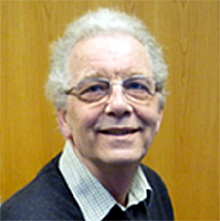 |
Andy (JG) Vinter has over forty years experience of working in the pharmaceutical industry and has been involved in drug discovery research at organisations including Beechams, Ciba, Maybridge, The Wellcome Foundation and SmithKline and French. From 1990 to 2001, he was Scientific Consultant and Honorary Research Fellow at the University of Cambridge. He is presently a Visiting Professor at University College London and is a Fellow of the Royal Society of Chemistry. Throughout Andy's career, he has maintained a strong interest in both molecular recognition and molecular similarity, with a particular focus on how insights could be applied in the drug design area. His interest in electrostatics led to the development of XEDs, an improved empirical approach to representing the molecular electrostatic potentials and how they influenced interactions such as pi stacking. This, in turn, led to the development of novel field based technologies, targeted at viewing molecules in the way that they would be seen by their protein, or other macromolecular, binding sites. With support from the Wellcome Trust, Cresset Biomolecular Discovery was established in 2001 as a vehicle for further development and commercialisation of the software and intellectual property. As scientific founder, and Chief Scientific Officer, Andy continues his active involvement in the company's science and ongoing development. Andy has had a long history of involvement with the MGMS. He was the founder member of the Society which was set up in 1981 with the help of, amongst others, Andy Morffew and David White. He served as first Chairman, remaining on the Committee for a number of years. In March 2007, he was one of the key speakers at the 2007 MGMS Silver Jubilee Meeting. |
 |
Frank Blaney has a long association with the MGMS, having served as a committee member from the earliest days of the Society. During this time, he has been a member of the editorial board of the Journal of Molecular Graphics and Modelling and the Journal of Molecular Modelling. He was Chair of the Society for three years and has been responsible for co-organising, and contributing to, many conferences. Frank is a long-standing member of the computational chemistry community. He joined Beecham Pharmaceuticals as a medicinal chemist in 1978, soon becoming interested in computational chemistry and founding a group there in the early 1980s. Frank remained in the company for 31 years, through the various mergers which resulted in the formation of GSK. Throughout this time, he worked on a number of therapeutic areas and has a particularly strong interest in the CNS area. Frank has been actively involved in the development of approaches to model membrane bound proteins such as GPCRs, ion channels and transporters, and the application of these approaches in drug discovery. He also has a strong interest in cytochrome P450 enzymes and the use of quantum mechanics in investigation of mechanistic questions. He has co-authored over 60 papers, including a number of patents, and has also been heavily involved in software development. In 1995, he was a visiting professor at Queen's University. Since leaving GSK in 2008, Frank has become a consultant, working closely with Heptares Therapeutics, drawing on his expertise in the GPCR area. |
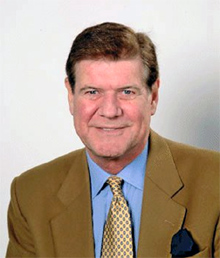 |
Graham Richards, a founding member of the Molecular Graphics Society (now the MGMS), has made many contributions to the field of molecular modelling. In 1976 Graham published what was to become one of the pioneering books of its time, Quantum Pharmacology. Since then, he has worked in many areas of the field. He was one of the first to develop the concept of "Molecular Similarity" and its use in ligand based drug design. He demonstrated the use of free energy perturbation methods successfully in the calculation of partition coefficients and the redox potentials of bioreductive anti-cancer drugs. Homology modelling was a constant theme with studies on proteins such as ion channels, cytokines and cytochromes P450, and also with DNA. In the 1990's, use was made of combined QM-MM methods to study a variety of enzyme mechanisms. The group has also made contributions to the fields of neural networks and QSAR. More recently pattern recognition has become a major theme. This has been applied to the areas of molecular alignment and protein binding site recognition. The latter has led to novel developments in virtual docking and especially in the use of distributed computing. In the "Screensaver Project" use is made of spare cpu cycles in some 2.5 million PC's all over the world, to dock a collection of 35 million virtual molecules into a number of target proteins. In addition to his academic career, in 1989 Graham together with Tony Marchington, set up the software company, Oxford Molecular. This supplied a variety of specialist modelling software to academics and industry. The company flourished for several years before being split and sold off to Millenium and Pharmacopeia (Accelrys). He was elected as Chairman of Chemistry in Oxford in 1997 and was instrumental in the building of the new chemistry department there, which was opened in 2004. Graham is the author of over 330 papers and 15 books. He is the recipient of a number of awards including the Mullard Award in1998, the Italgas Prize in 2001 and the 2004 ACS Award for Computers in Chemical and Pharmaceutical Research. In 2001 he was awarded the CBE for his services to chemistry. |
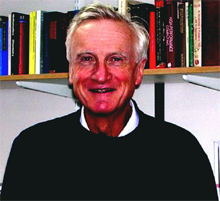 |
Ian Hillier was awarded the degree of Doctor of Philosophy in 1964 at Imperial College London for work on "Transition in Bulk Polymers." He then went on to a two-year postdoctoral position with Professor Stuart Rice at the University of Chicago. Subsequently, he took up a lectureship at the University of Manchester, and in 1983 was appointed Professor of Theoretical Chemistry. He has published over 500 papers using theoretical and computational methods to understand the relationship between molecular structure, physical properties, and chemical reactivity for a wide range of chemical systems. His work focuses on prediction of reaction mechanisms, particularly those of biological relevance such as enzyme catalysis and the influence of solvent; modelling of drug receptor interactions to predict structure activity relationships; modelling of catalytic activity of solid state materials such as zeolites; and modelling reactions of atmospheric importance. In particular he has pioneered in the UK the use of hybrid or embedding methods to study the condensed phase, and has applied these methods to study the solid state, solution chemistry and enzyme reactivity. In recognition of his work, he received the Royal Society of Chemistry 1998 Award in Theoretical and Computational Chemistry. |
 |
Martin Karplus is Theodore William Richards Professor of Chemistry at Harvard University (since 1979), as well as Director of the Biophysical Chemistry Laboratory, a joint laboratory of CNRS and Universite de Strasbourg in Strasbourg, France. He received a BA degree from Harvard University in 1950, and a Ph.D. from California Institute of Technology in 1953 while working with Linus Pauling. He has supervised over 200 graduate students and postdoctoral researchers. Martin Karplus has made significant contributions to computational and physical chemistry, including nuclear magnetic resonance spectroscopy, chemical dynamics, quantum chemistry, and molecular dynamics simulations of biological macromolecules. His pioneering work with McCammon and Gelin on bovine pancreatic trypin and its inhibitor was the first published molecular dynamics simulation of a protein. His group subsequently founded the very widely used CHARMM program for biomolecular dynamics simulations. His extensive work on molecules of biological interest has produced many important insights into their physical and chemical properties. In October 2013, Professor Martin Karplus was awarded the Nobel Prize for Chemistry, along with Prof. Arieh Warshel and Prof. Michael Levitt for their work on "development of multiscale models for complex chemical systems." |
 |
Mike Hann completed his PhD on isosteric replacement in Enkephalins at the City University, London in 1980. He started his career as a medicinal chemist at Wyeth and then moved to GD Searle in the UK. His strong interest in the emerging computational chemistry field in the early 1980s led him to transition his career to become an early pioneer, adopter and champion for the role of computational chemistry as a new technique in drug discovery. In 1986 he joined Glaxo as a computational chemist and progressed within the company as group leader and then Directors of Computational Chemistry, Biomolecular Structure and Chemical Sciences Throughout his career Mike has maintained a strong interest in building bridges between scientific communities, be it biology and chemistry or industry and academia, and he was heavily involved in promoting the activities of MGMS in its early days. As Chairman in the mid-nineties, he oversaw the transition of the society from the original Molecular Graphics Society to the Molecular Graphics and Modelling Society with the aim of making the society more representative of the actual impact molecular modelling was having in many disciplines. Under his open and inclusive style, he has encouraged and acted as a role model for many young aspiring scientists who then went on to become proficient computational chemists. He has published ca. 70 original papers, reviews and patents and is perhaps best known for his work in molecular complexity, fragment screening and lead-like concept. He is also a proponent of how a good scientific and organisational culture can shape and influence efficiency in drug discovery. He has recently been appointed as visiting Adjunct Professor of Chemical Biology Translation in the Department of Chemistry at Imperial College London. |
 |
Professor Rod Hubbard has spent his academic career at the University of York, developing and applying methods to study aspects of protein structure. After his DPhil in 1980, he took up a temporary lectureship where he worked alongside the protein crystallography group of Guy and Eleanor Dodson and began developing molecular graphics. Initially, this was to generate custom hard copy figures for the definitive paper on insulin structure with Dorothy Hodgkin. He then went on to develop some of the first molecular graphics on a variety of early computer systems - such as, a Z80 microcomputer, the first graphics workstation (the PERQ) and the DAP parallel computer from ICL. He took up a New Blood lectureship at York in 1983 and immediately went on sabbatical to Harvard with Martin Karplus where he wrote HYDRA – which developed into the program QUANTA marketed by Polygen (MSI, Accelrys, BIOVIA) who maintained a development group in his lab at York until the early 2000s. Other notable molecular graphics and modelling highlights included the exploration of virtual reality methods in the early 1990s and the early forays into computational (MCSS and HOOK) and experimental (MCSC) methods in fragment based discovery. From the mid-1980s, Rod helped to build up the Structural Biology Laboratory at York (YSBL) to over 70 scientists studying protein structure and function, of which he was Director from 1992-2001. In his personal research he was interested in probing structure / function of therapeutically important proteins such as nuclear receptors and how to use protein structure in drug design. This led to collaborations with a number of pharmaceutical and SME drug discovery companies. In 1997 he was a founding SAB member of the company RiboTargets which became Vernalis. Since 2001, he has split his time between York and Vernalis. Rod's current research at York includes adapting methods of structure based discovery to provide chemical tools to probe biological systems – including enzyme activators, identifying potential antibiotic targets and 3D fragment synthesis. At Vernalis he helps to coordinate external collaborations and advises on the progression of internal projects, with a particular interest in developing the methods in structure and fragment based discovery. In addition, he sits on various Research Council boards and committees and acts as a consultant to a number of pharmaceutical and biotechnology companies. He was involved with the MGMS from the earliest times – for many years acting variously as Chair, Membership Secretary, organiser of meetings, committee member and Editor of the Journal. |
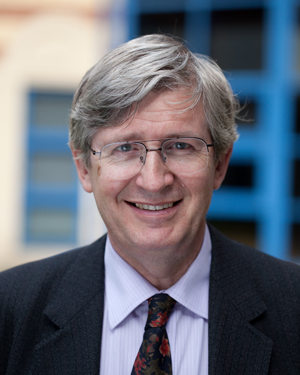 |
Professor Peter Willett obtained a first degree in chemistry at Oxford and then went to the University of Sheffield in 1975 to study for an MSc in information science. He stayed to undertake first doctoral and then post-doctoral research and is now Professor of Information Science in the Information School in Sheffield, having been awarded a Personal Chair in 1993 and a DSc in 1997. His research has focused principally on the development of novel algorithmic techniques for chemoinformatics, but he has also made significant contributions to aspects of information science such as stemming algorithms, citation analysis and text retrieval. His PhD, under the supervision of Michael Lynch, resulted in some of the first effective techniques for the indexing of chemical reactions, this spurring a long-standing interest in the use of graph-theoretic techniques for applications such as pharmacophore mapping, substructure searching, and the structural comparison of biological macromolecules. His post-doctoral research initially evaluated the use of similarity and clustering methods with databases of textual documents, but this soon led to the development of analogous, and now standard, methods for the organization and searching of databases of 2D chemical fingerprints. Other important areas of work over the years have included the use of data fusion for enhancing the effectiveness of ligand-based virtual screening and the use of genetic algorithms for a range of chemoinformatics applications, this including the widely used GOLD, GASP and GALAHAD programs for ligand-protein docking and pharmacophore mapping. Peter's research has been reported in over 550 articles, books, chapters and reports that have attracted over 30,000 citations in Google Scholar, and has led to him being the recipient of three awards from the American Chemical Society: the Herman Skolnik Award, the Award for Computers in Chemical and Pharmaceutical Research, and the Patterson-Crane Award. Other notes of recognition have included the Distinguished Lecturer Award of the American Society for Information Science, the Kent Award of the Institute of Information Scientists, and the Lynch Award of the Chemical Structure Association Trust, and inclusion in Who's Who since 2004. He has served on the editorial boards of 15 journals, currently Journal of Cheminformatics, Journal of Computer-Aided Molecular Design, Journal of Documentation, and MATCH. |